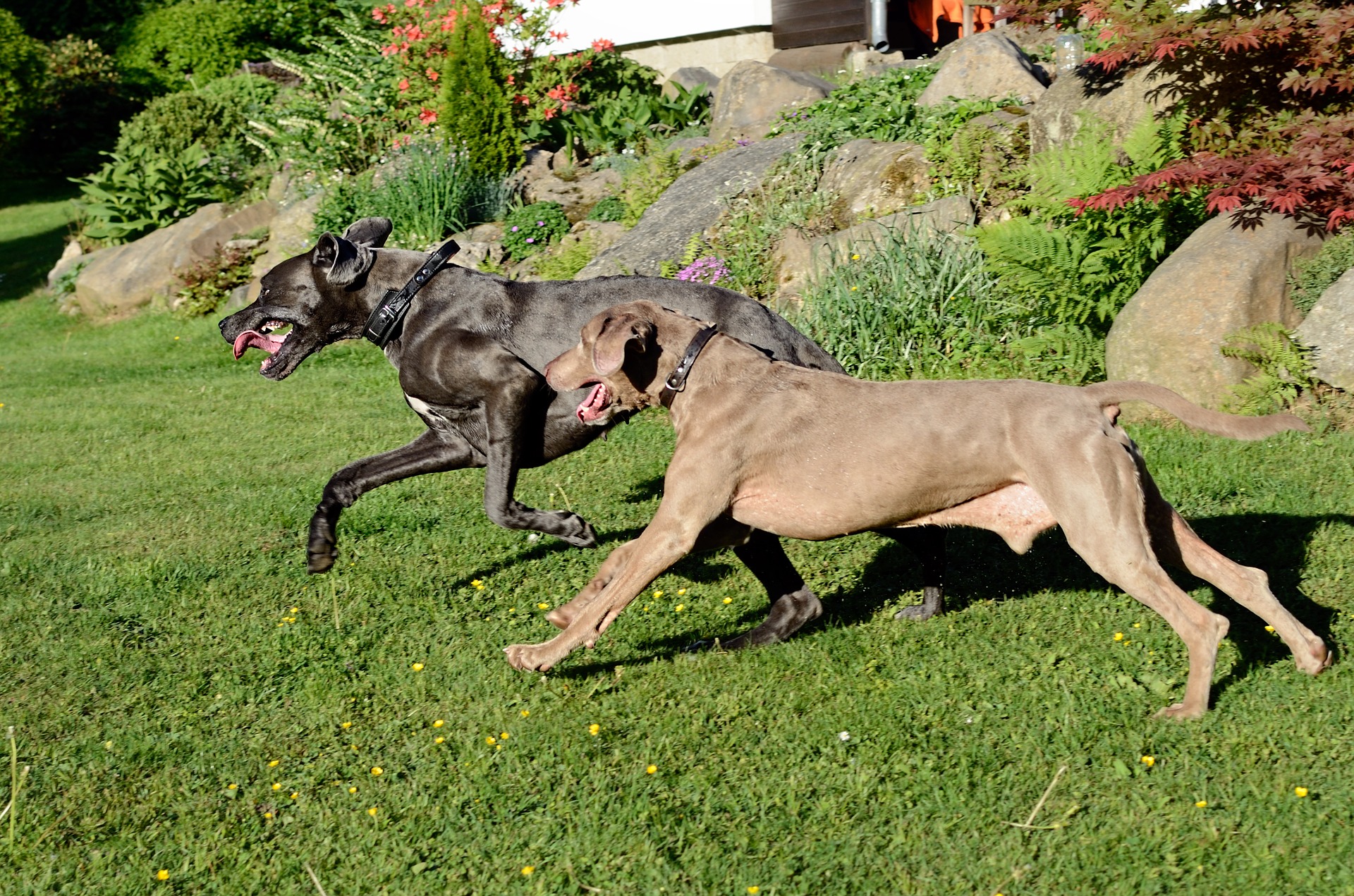First impressions are just as important to dogs as they are to people. When introducing two dogs, you need to do it slowly and correctly so that they do not get off on the wrong foot—a poor introduction can set the tone for the entire relationship. Develop a plan with the other owner to give your pups a solid foundation for a great friendship.

Neutral Ground is Key
Imagine if a stranger suddenly showed up in your house, and everyone expected you to get along immediately. That’s not a fair expectation. Similarly, it’s not a good idea to introduce dogs in a place that one of them considers their own territory – be it the house, the yard, or even your neighborhood. For the initial few introductions, choose a neutral place. A quiet park would be great, or the fenced backyard of a dogless friend.
Sharing Isn’t an Option (At First)
Many dogs aren’t likely to take kindly to other pups playing with their toys or getting near their food. You can prevent territorial skirmishes by keeping all of your dog’s things away while the dogs are getting used to each other. If you usually bring a toy on your walks, leave it behind. You may even want to put treats away for now.
Parallel Walking
Before bringing the dogs face-to-face up close, give them some time to smell each other. You can do this with a technique called “parallel walking.” You will walk the dogs in the same direction, one in front of the other. They should be close enough that they are aware of each other’s presence, but not so close that one is hyper-fixating on the other. This distance will vary depending on the dog. After you’ve walked a couple of hundred feet in one direction, turn around and start walking the opposite way. This way, both dogs have the chance to sniff the scent of the dog in front. Encourage any smelling, especially in areas where one dog has urinated–this smell contains a TON of information that can help the dogs learn about each other. If the dogs seem interested but not aggressive, begin slowly decreasing the distance between the dogs as you parallel walk.
Meet through a Fence
If the dogs seem relaxed, and if a chain-link fence is available, allow them to meet through the fence. This gives them a chance to see each other up close and sniff each other more while maintaining a safe barrier between them. It’s also a great solution if one or both dogs tend to be leash-aggressive. If you do not have access to a fence, you can bring the dogs together slowly on a leash. Both handlers need to have control of their dog and be ready to pull the dogs apart if necessary. Pay close attention to their body language during this time–you can prevent things from escalating by identifying negative body language early, such as tucked tails, rigid stature, staring, or raised hackles.
Time for Play
Repeat the previous steps for as long as you need to until you feel comfortable with your dogs meeting off-leash in the same space. Allow them to play and continue to keep a careful eye on their body language. Happy, wagging tails, play-bowing, etc., are great. If one of the dogs begins to look a little too nervous or fierce, separate them immediately and work on the earlier steps before trying again.
Gulf Coast K9 Dog Training is a professional dog training facility located in Bradenton, Florida.




